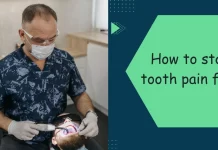In a relatively brief amount of time, meth addiction will begin to take the life of a person. A person may be medically identified as having a meth use addiction when he or she satisfies more than two of any of the following conditions in a 12-month span, according to the Diagnostic and Statistical Manual of Psychiatric Disorders (DSM-V):
- Except in circumstances that are harmful to the person and/or others including overdosing or driving while under the influence, the use of meth
- Neglecting technical, instructional, or personal roles
- Internal or relationship difficulties arising from meth usage
- To get the same feeling, needing ever more meth (tolerance)
- For longer periods of time, using greater amounts of meth
- Repeated unsuccessful attempts to regulate or discontinue usage fully
Table of Contents
What are the side effects of Meth?
It greatly depends on how long does meth stay in your system. Undesired complications caused by the use of meth are adverse effects. They are often referred to as ‘adverse effects’ or ‘adverse reactions.’
The use of addictive methamphetamine will seriously impair both the user’s mind and body. Not just in the life of the consumer, but even for everyone surrounding him or her, a dependence on methamphetamine induces significant damage and anxiety. Some of the physical effects of the use of meth include:
- Motor skills issues.
- Having starvation.
- Increased HIV risk due to dangerous sexual activities.
- Dysfunction in sex.
- Injuries because of abusive behavior.
- Sore skin.
It is probable that an individual will develop a physical dependency on the drug, even with comparatively short-term yet repeated use. You can suffer multiple uncomfortable withdrawal symptoms if you unexpectedly quit smoking meth after being addicted, including:
- The reluctance to find gratitude.
- Depression.
- High Suicidal Risk
What Treatment Options Are Available?
For those struggling with methamphetamine abuse, there are several different types of treatment. There is no treatment package for one-size-fits-all; it relies on what your personal desires and interests are. Most generally, the following types of recovery services are available:
Inpatient therapy: You must remain in the hospital for the remainder of the treatment program, which can range anywhere from 30 to 90 days and if appropriate, even longer. You will get a range of programs, such as a review of intake, psychodynamic counseling, community counseling, medical and psychological treatment, and preparation for aftercare.
Dual diagnosis: Some rehab centers specialize in the treatment of co-occurring disorders, such as meth use, and mental health issues, such as anxiety or depression. If you believe you have a psychiatric disorder, it’s best to locate a dual diagnosis facility that will effectively treat all of your conditions.
Outpatient treatment: This rehab service encourages you to remain at home while undergoing treatment for meth abuse when it fits well for you so that you wouldn’t have to leave the obligations of your career, home, or education. In all instances, outpatient care will not be suitable, for instance, for people with relatively serious addictions, because it lacks the completely immersive framework that inpatient treatment provides.






















